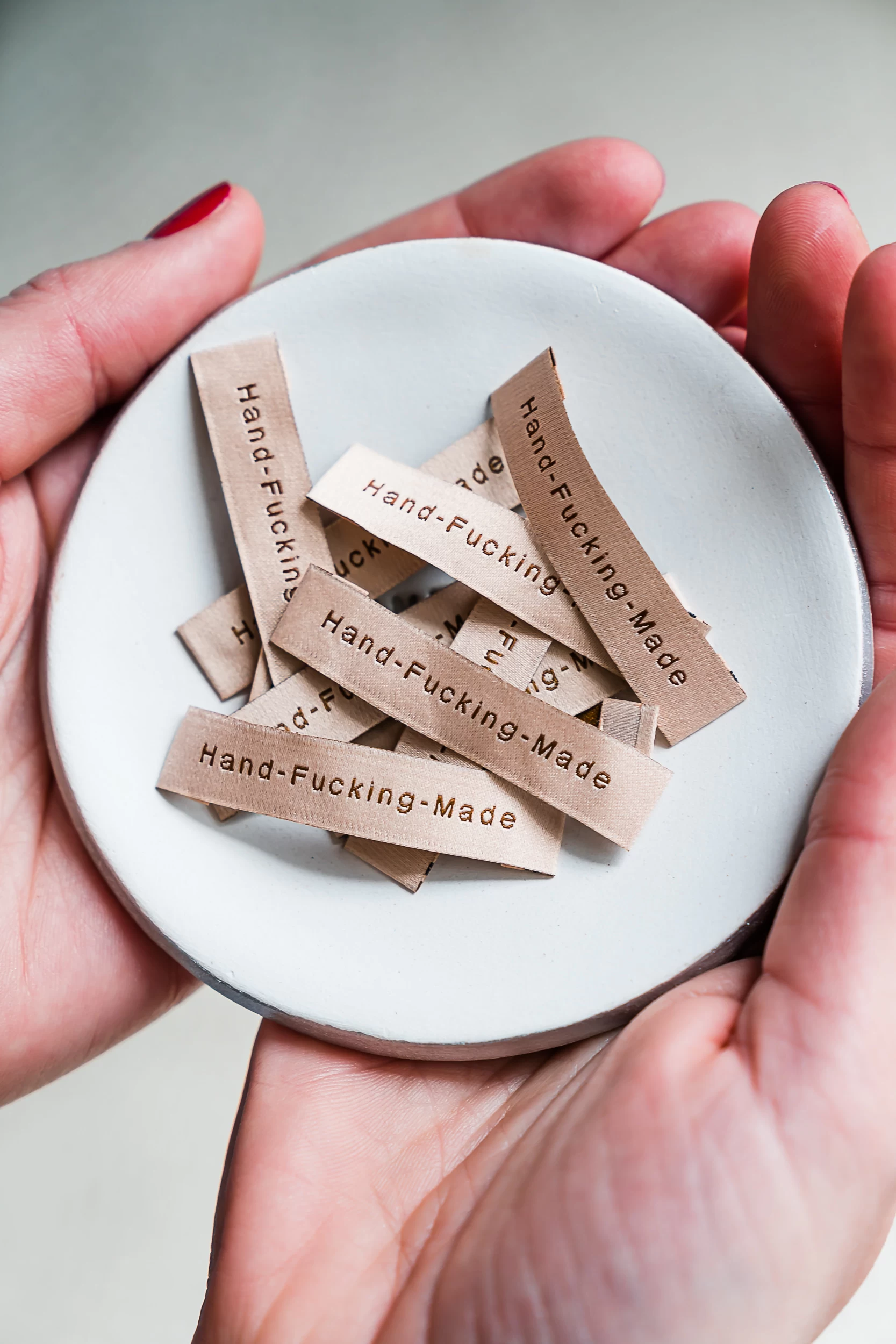

The cost of living impact on small businesses: should you increase prices?
20TH AUGUST 2023
Should I increase my prices to cover my costs even though I know customers are struggling financially in this climate? What are the considerations for small businesses when it comes to increasing prices? Read on to find out…

How businesses can increase prices to deal with rising costs
For small businesses struggling with the cost of living themselves, knowing if (and how) to reset or increase prices can be difficult.
- How do you tell people you’re resetting your prices?
- Will you lose customers if you increase the cost?
- Are you now asking too much or will you come across as being greedy?
The short answer is that there will always be people ready to spend money on beautifully made products no matter what the climate. The worst thing you can do now is to sell yourself short. Holly held an emergency SME: SOS Instagram LIVE to discuss this very topic a while ago with some extra special female founders: Rebecca McMillan from Wildflower Illustration, Mika Wassenaar from Siamese Dreams and Charlie Deeley from Big Bakes Bakery. Their tips are just as relevant today…
5 golden rules for small business pricing
When it comes to increasing your prices there are some important factors to consider. Firstly…
1. When you set your prices, don’t underestimate how unique you are
It’s not usually wise to set your prices solely by looking at the competition. You have your own story, brand, service and more. Your pricing must reflect how unique YOUR business is.
2. Don’t set your prices too low: don’t devalue your time
Your job should be fun but that doesn’t diminish the value of what you make. If you devalue your time, you are devaluing the whole industry’s time, too. Setting prices too low is counter-productive.
3. Never price based on your perception: base it on fact
Always remember: It’s not your perception of how much something’s worth or what you would pay for a product that matters but what other people would pay for it and what it’s worth to them.
4. Don’t be afraid to explain your prices to customers
Clarify why you’re charging what you are. Whether it’s how long a product takes to make, the quality of materials you use or a rise in supplier costs. Help customers understand.
5. Don’t assume people aren’t spending money — they are
Even when times are hard, there will still be people spending money. Plus some might spend less on themselves but still buy gifts, for example. Don’t underestimate the shopping potential.
Always remember: It’s not your perception of how much something’s worth or what you would pay for a product that matters but what other people would pay for it and what it’s worth to them.
How to avoid price increases: find efficiencies instead
Everyone’s different. Rebecca from Wildflower Illustrations shared how she made the decision NOT to put up the prices of her beautiful cards and prints this year, as she was worried about the impact on customers. She recommends doing an audit to see if you can balance costs by other means. Can you find ways to be more efficient to reduce your outgoings somehow? Or could you launch your Christmas offering earlier to give people more time to shop?
If you do need to increase prices, how do you do it well?
Mika, founder of Siamese Dreams, explained that she was so incredibly nervous before sending an email to customers to let them know about increasing her prices that she felt physically sick — but she just knew it needed to happen. All her costs were rising, from labour and artists’ fees, to the price of the natural fabric they use. So how did she let people know? Mika said that she thanked customers, pointed out what the increases were for, how much they would be, and when they would come into play, so they had a window of time to still order at the current price.
She believes in being transparent and respects her customer community, so was just open — and the response was incredible. People wrote to her and said how much they appreciated this and that they still wanted to support her as a female founded business. She actually saw a rise in sales, which helped her value herself and her time more.
Have you done recent market research to adjust pricing if you need to?
Founders often don’t get round to doing up-to-date research to determine pricing, and so what once seemed like the right amount when you first launched might not be accurate today. When Charlie from Big Bakes Bakery joined Holly LIVE, she explained how they tried and tested products from all the local sellers and discovered that they were charging £2.75 for their bakes while others were charging £3.50 for theirs, despite being a quarter of the size. Charlie said this helped her see that they had to adjust prices and that she could see the new ones were fair. She also diversified. Big Bakes went to more food fairs to help make up the shortfall. Charlie’s advice was that if you’re going to increase prices, now is the time as other businesses are, too — yet you need to stay true to you.
If your business is struggling financially at the moment, here are 6 things to try when sales are low or some tips from Basil & Ford on how to innovate your business.

The short answer is that there will always be people ready to spend money on beautifully made products no matter what the climate. The worst thing you can do now is to sell yourself short.

Cost of living price impact: key takeaways…
Here are the 5 main points to remember.
1. Your unique business should be reflected in your unique prices:
Take your brand and service into consideration and don’t just price your range to match other founders.
2. Don’t devalue your time by setting prices too low:
Do your research. Setting pieces too low doesn’t just do yourself a disservice but your fellow founders too.
3. Create your prices by looking at data and fact:
Think about all aspects of your offering and what it’s worth, not just what you perceive your prices should be.
4. Explain your price increases to customers:
Many will respect this and your reasons for having to do it.
5. Remember people are spending money still:
Encourage them to spend it with you.
Images: ‘Hand-fucking-made' labels - by Kylie and the Machine, 'Fun Sized Gold Leather Half Penny Purse' — by Natthakur
Related content
more articles on finance, legal & tech

Is your tech sustainable? 5 points for small businesses to consider

How to grow your business with steady sales and make your income last year round

4 tech secrets every small business needs to know

How do I protect my designs from being copied?

7 cyber security tips on how to protect your business from hacking

What is a financial feminist? And why is finance a feminist act?

5 tips on choosing the right computer for your small business
Be the first to know
Sign up to our emails for brand new small business gift and homeware ideas, as well as the latest creative inspiration, delivered straight to your inbox.
